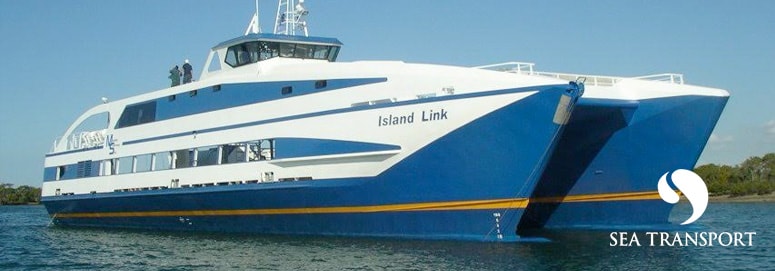An analysis in efficiency and operability in the medium-speed, medium-sized ferry sector.
This article was written based on the research conducted by Dr. Alf Baird, former Professor of Maritime Business at Edinburgh Napier University.

In the small to medium-size ferry industry, controversy continues about which hull type is greater in efficiency and operability: the monohull or the multi-hull. Much of the debate centres around the long-held belief that multi-hull ferries have an operational weakness in comparison to their single-hull competitor.
But today, this belief isn’t necessarily the case, considering the increasing number of medium-speed RO-PAX catamarans that have been built in the past few decades.
So which hull-type is best for ferry operations?
Let’s look at the one-on-one comparison study conducted by Dr. Alf Baird between a medium-speed monohull and a multi-hull catamaran RO-PAX ferry. Both ferries have similar vehicle deck space, speed and operate within fairly short island routes that occasionally experience severe weather and rough seas.
The considerations in the comparison study were:
- Efficiency:
Each ferry’s design aims to minimise a vessel's block coefficient, its resistance, and its displacement, while striving to increase the revenue earning deadweight. - Motion Sickness Incidence:
‘MSI’ or Motion Sickness Incidence is a function of motion and extent of time. Catamarans have a different motion to monohulls; however, this doesn’t necessarily mean the MSI is greater for a catamaran than a monohull. - Manoeuvrability
Catamarans are known for having the ability to manoeuvre in confined port areas even during strong winds due to their widely spaced hulls. Monohulls tend to experience more cancellations due to unfavourable weather and are much more difficult to handle in confined port spaces. - Sea Keeping
‘Seakeeping’ refers to a vessel’s ability to withstand and maintain speed during poor weather conditions and high waves. - Other Factors:
Each ferry’s overall level of safety, the quality of evacuation procedures and cost to operate are considered.

The conclusions found in Baird’s study were that:
- Efficiency:
The catamaran was found to have a smaller block coefficient1 and, due to significantly lower resistance, the catamaran requires less power to perform at the same speed and carrying capacity of a monohull. - Motion Sickness Incidence:
The catamaran was found to have an advantage over motion sickness thanks to its specifically designed shape which reduces the likelihood of slamming and rolling. - Manoeuvrability and Seakeeping:
The catamaran’s specific design features, such as its slender bow form and its widely spaced hulls result in a vessel that can operate both in tight areas and in adverse weather conditions. The monohull was found to have a much higher rate of cancellation due to weather and port size. - Safety:
The catamaran was found to have an advantage over the monohull with regards to its superior safety and evacuation features and its lower environmental impact. - Cost:
The comparison shows that the catamaran has a considerably reduced operating costs that its monohull competitor and is far less likely to experience cancellations due to environmental factors.
Dr. Baird’s comparison study concludes that medium-speed RO-PAX catamarans offer very good seakeeping, a greater manoeuvrability in port and overall lower operating costs than comparable monohull vessels, making them the ideal choice for operations in the medium-speed, medium-sized ferry sector.
1 the ratio of the volume of the displacement of a ship to that of a rectangular block having the same length, breadth, and draft.
At SEATRANSPORT our team of ferry operation consultants are experts in finding ferry solutions through our bankable feasibility studies and operations management services no matter the transport task and size.
For more information on our ferry operation services, please click here.
To view our ferry fleet, please click here.

